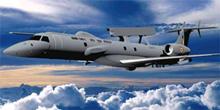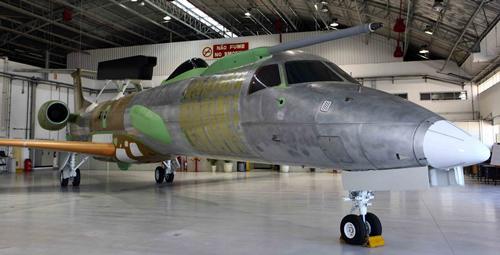DRDO to integrate AEW&C systems on EMB-145I aircraft in July
18 Apr 2011
Bangalore: India will begin integrating indigenously-built airborne early warning and control (AEW&C) systems and components onto a customised Brazilian Embraer -145 aircraft from July, a top defence official said Saturday.
 According to DRDO chief and scientific advisor to the defence minister, Dr VK Saraswat, the first Embraer plane (EMB-145I) will land in India by June-end after its power units have been connected to the indigenously built airborne early warning radar fitted atop the fuselage. Integration of its sub-systems will begin in July, in order to prepare the aircraft for user trials.
According to DRDO chief and scientific advisor to the defence minister, Dr VK Saraswat, the first Embraer plane (EMB-145I) will land in India by June-end after its power units have been connected to the indigenously built airborne early warning radar fitted atop the fuselage. Integration of its sub-systems will begin in July, in order to prepare the aircraft for user trials.
India has placed a $400 million order for three such aircraft with Brazilian aerospace major Embraer. All three aircraft, customised with advanced indigenously built radars and sensors, will be readied for induction into the Indian Air Force (IAF) service by 2013.
Integration of systems and flight tests will be undertaken in Bangalore by the Centre for Airborne Systems (CABS) in association with the Aeronautical Development Agency (ADA) of the state-run Defence Research and Development Organisation (DRDO).
The Centre of Airborne Systems, part of India's Defence Research and Development Organisation (DRDO), will integrate the primary and secondary radars, communication and electronic intelligence, satellite communications and electronic countermeasure systems.
"After the first plane was rolled out in February, the primary radar, identification-friend-or-foe (IFF) interrogator, communications and electronic intelligence receivers and data-processing systems are being integrated with the fuselage," Dr Saraswat said on the margins of the fifth Air Chief Marshal LM Katre memorial lecture here.
Embraer will deliver the remaining two aircraft in 2012 and 2013.
The aircraft is modified for use in Indian weather conditions and will be certified for airworthiness and user trials.
"The airborne radar is designed to detect and distinguish hostile aircraft and missiles, and help enhance IAF's surveillance and strike capability," Dr Saraswat said.
As opposed to the Il-76 long range Israeli Phalcon AWACS, the Embraer-145I is a medium-range system that can be used to direct fighter jets and other aircraft and also pick up missile flight in the area and keep a watch on air and ground activities from miles away.
The EMB-145I aircraft has been modified to carry the Indian-made Active Array Antenna Unit (AAAU) mounted atop the plane's fuselage.
The Embarer-145I
Though it looks similar to the Saab Erieye radar on Embraer's existing EMB-145 AEW&C platform, supplied to a number of countries, including Brazil, the Indian designed phased-array antenna mounted above the fuselage is shorter and deeper, and the supports attached to the fuselage holding the radar in place, much stronger.

According to DRDO and CABS officials, the antenna is deeper because the transmit/receive modules for the IFF are integrated into the antenna, running along the bottom of the array of transmit/receive modules for the radar.
Changes to the existing EMB-145 platform for the Indian AEW&C programme include installation of an in-flight refuelling probe, a new electrical system and a new cooling system.
The radome above the forward fuselage is for satellite communications and the fairings on the sides of the fuselage are for electronic surveillance measure (ESM) antennas.
According to DRDO director general Dr VK Saraswat, the AEW&C programme is on schedule and the fully configured aircraft is scheduled to fly next year.
Once programme development is complete, the three EMB-145I AEW&Cs will be delivered to the IAF in 2014 to operate alongside the larger Beriev A-50 AEW&C platforms, which carry the Israeli Elta Phalcon phased-array radar.
In addition to surveillance and tracking of aircraft and UAVS, the surveillance systems can also detect radar emissions and other communications.
The EMB-145I AEW&C system will operate with a maximum crew of 12, and can fly non-stop for 10-12 hours with mid-air refuelling. Total weight of the fully configured aircraft is 24 tons.































